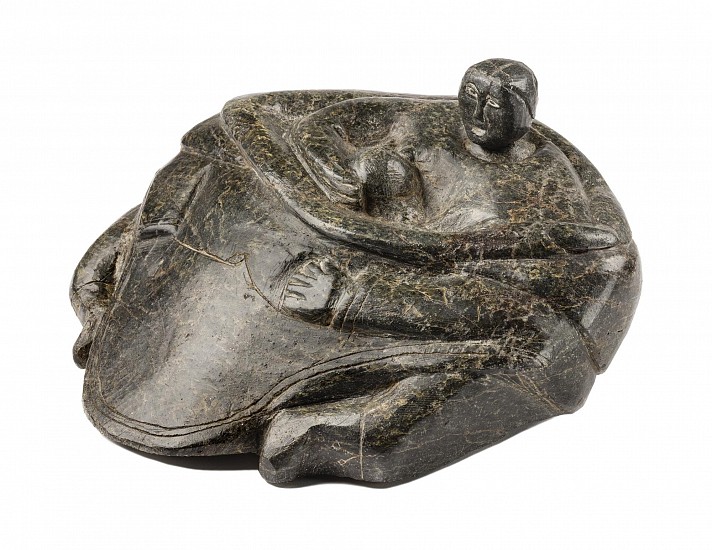Attributed to Isa Aqiattusuk Smiler






Attributed to Isa Aqiattusuk Smiler, Mother nursing child, c. 1951
Mother Nursing a Child is surely one of the earliest examples of its type in existence. It was likely carved in 1951, though it is possible that it was carved already in 1950. This extraordinary sculpture has all the hallmarks of the theme, one of the most iconic in Inuit art. The seated mother’s body and clothing are exaggerated in bulk. She has pulled down the top of her amautiq, baring her shoulders, and has manoeuvred her child to the front so it can nurse. She has also withdrawn her right arm from her sleeve so that she can hold the child to her breast. The unusually flattened form of the work is no doubt due to the original shape of the stone; we think this also why the artist was obliged to add the woman’s head as a separate piece – there was simply not enough stone. This is a brilliant solution to a practical problem, and one that we have observed several times in other Inuit sculptures. It is a testament to the ingenuity of the artist, just as the overall composition is a testament to his artistic vision.
Much as we might like, it is not always possible to make attributions for special works. In the end, it is the beauty and strength of the work itself that really matter. Having said that, we think there is good reason to suggest that this superb early sculpture could be the work of one of the great Inukjuak masters, Isa Smiler. The Walker’s Nov. 2016 catalogue proposed a chronology for the major early mother-and-child works by Isa Smiler (c. 1952-1955). That analysis would place our example at the front of that timeline, if it is indeed by Isa Smiler: c. 1951.
Literature: For a similar c. 1952 work attributed to Isa Smiler see Walker’s Nov. 2016, Lot 39. See the section devoted to this artist in Darlene Coward Wight, Early Masters: Inuit Sculpture 1949-1955 (Winnipeg Art Gallery, 2006) pp. 92-97. For comparable works in a similar low-slung format (but by different hands) see Early Masters, p. 35 and Swinton (1972/92) figs. 296 and 298.
03527-2


